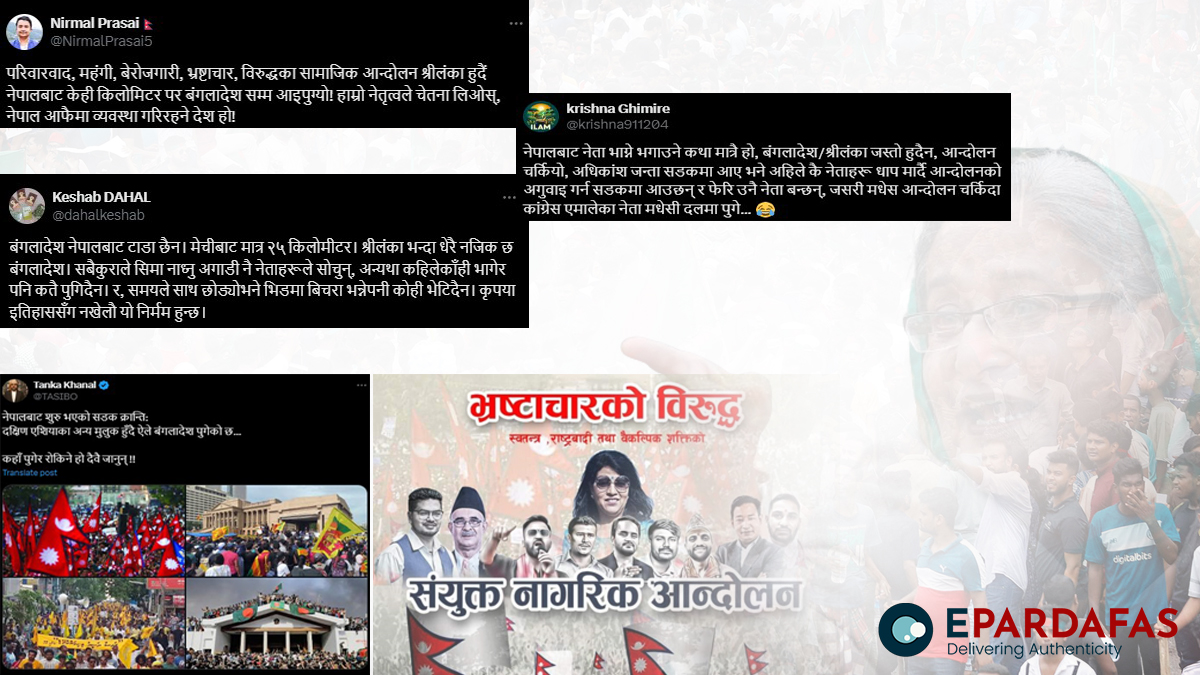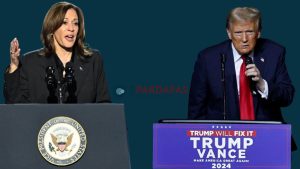
Ripple Effect of Bangladesh Uprising: Nepal’s Political Landscape Shaken by Protests and Social Media Activism
In a dramatic turn of events, the resignation and exile of Bangladesh’s Prime Minister Sheikh Hasina have sent ripples across South Asia, sparking conversations and movements in neighboring countries, including Nepal. After enduring weeks of violent protests against the reservation system in government services, Sheikh Hasina, who ruled Bangladesh for over a decade and a half, found herself compelled to flee to India, leaving behind an interim military government. This development follows a series of high-profile exits in the region, reminiscent of Afghanistan’s Ashraf Ghani in August 2021 and Sri Lanka’s Gotabaya Rajapaksa in July 2022.
These departures underscore a clear message: no matter how entrenched their power, leaders can be forced to submit to the will of the people. This wave of political upheaval in Bangladesh has not gone unnoticed in Nepal, where growing discontent with the current political system, rampant corruption, and an increasingly burdensome bureaucracy is beginning to manifest in more overt forms of dissent.
Rising Discontent in Nepal
In recent weeks, social media platforms in Nepal have been buzzing with expressions of solidarity with the Bangladeshi uprising. The parallels drawn between the two nations have fueled speculation and even calls for a similar movement in Nepal. Disillusioned citizens, frustrated with the state of affairs in their own country, are beginning to voice their discontent more boldly.
Former journalist and social activist Rama Singh has taken the lead in mobilizing this frustration, organizing a coalition aimed at launching a civil movement against corruption. The group has issued a clarion call to challenge all forms of social, economic, and political injustice. Their movement, still in its nascent stages, is gathering momentum as more citizens express their willingness to challenge the status quo.
Adding fuel to the fire, a group of young students recently staged a protest at Maitighar Mandala, one of Kathmandu’s iconic protest sites. While the immediate focus of their protest was different, they invoked the example of Bangladesh, warning that Nepal could be next in line if systemic issues are not addressed.
Economic and Social Strains
Nepal’s current economic crisis is deepening by the day. Public debt has spiraled, with each Nepali citizen now burdened with an average debt of NPR 83,431. Corruption, insecurity, and skyrocketing prices are further exacerbating the plight of the general public. The pervasive sense of injustice is driving many citizens to consider more drastic actions.
The sentiment is particularly evident on social media platforms. A user named Nirmal Prasain on “X” (formerly Twitter) highlighted the pattern of social movements spreading across South Asia, from Sri Lanka to Bangladesh, and warned Nepali leaders to take note. He wrote, “The social movement against familyism, high prices, unemployment, and corruption has reached Bangladesh via Sri Lanka, just a few kilometers away. Our leadership must be aware—Nepal is a country that keeps managing itself.”
Similarly, another user, Keshav Dahal, urged leaders to act before the situation escalates beyond control, citing the proximity of Bangladesh to Nepal as a warning. He cautioned, “Bangladesh is not far from Nepal, only 25 km from Mechi. Bangladesh is much closer than Sri Lanka. Leaders should think before everything goes beyond the limit; otherwise, they might find themselves running and reaching nowhere.”
Diverging Opinions
While many are drawing direct parallels between Nepal and Bangladesh, not everyone agrees that a similar uprising is imminent. Some believe that even if a rebellion were to occur in Nepal, it would not unfold in the same way as it did in Bangladesh or Sri Lanka.
Krishna Ghimire, a user on social media, argued that the narrative of leaders fleeing from Nepal is more fiction than fact. He noted, “Leaders fleeing from Nepal is just a story of escape; it is not like Bangladesh/Sri Lanka. If the movement heats up, and most people come to the streets, the current leaders will likely join the movement and re-establish themselves, much like what happened during the Madhesi movement.”
The Road Ahead
As Nepal grapples with its economic and social challenges, the events in Bangladesh serve as both a cautionary tale and a source of inspiration for those seeking change. The situation remains fluid, with the potential for further unrest looming large. Whether or not Nepal will follow in Bangladesh’s footsteps is yet to be seen, but the voices of dissent are growing louder by the day. As these movements continue to gain traction, the government’s response will likely determine the country’s trajectory in the coming months.
The stage is set for what could be a significant moment in Nepal’s political history, and the echoes of Maitighar Mandala might just be the beginning of a larger, more profound transformation.
- Chinese Public Opinion on Nepal’s Loan Grant Proposal Sparks Debate Amid Corruption Investigation
- Chinese and Bangladeshi Nationals Illegally Acquiring Nepali Citizenship Raises Security Concerns
- US Special Envoy for Youth Affairs Abby Finkenauer Arrives in Nepal to Promote Youth Engagement and Democracy
- Seven Dead, Six Critically Injured in Darchula Jeep Accident













Comments